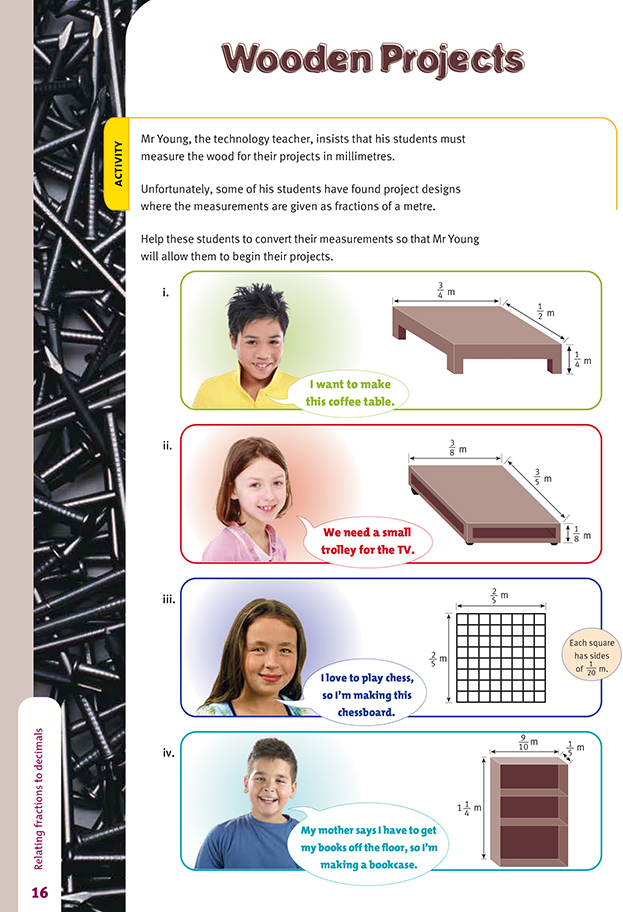This is a level 4 number link activity from the Figure It Out series. It relates to Stage 7 of the Number Framework.
A PDF of the student activity is included.
Click on the image to enlarge it. Click again to close. Download PDF (271 KB)
convert fractions to decimals
FIO, Link, Number, Book Five, Wooden Projects, page 16
The millimetre is a common unit of measurement for woodworking and building. The students need to understand that there are 1 000 millimetres in 1 metre. Thus, all the fractions in this activity have to be treated as fractions of 1 000.
As with the activity on page 15 of the students’ book, there are different ways in which the fractions of a metre can be converted to millimetres. One way is to use a double number line, for example:
Another way is by using ratios, for example, 3/4 = /1 000. Whatever the 4 has to be multiplied by to get 1 000, the 3 at the top has to be multiplied by too, that is, 3/4 x (250/250 ) = 750/1 000. Astute students will probably see that this is simply another application of the identity principle.
Alternatively, and still using ratios, the students could reason that whatever the 4 has to be divided by to get 3, the same should be done to the 1 000. Using a calculator, they could soon find that 4 divided by 3 is 1.3333 recurring and dividing 1 000 by the same number gives 750.
Perhaps the easiest way to convert the fractions of metres to millimetres is to use the calculator in a different way. The students could turn each fraction into a decimal (for example, 3/4 is 3 divided by 4, which gives 0.75) and then multiply this by 1 000 (0.75 x 1 000 = 750) because it is a decimal fraction of 1 000, and “of”
in this context means multiplied by.
Finally, you may wish to use question iii to challenge the students to work out:
• the area of the chessboard (400 mm x 400 mm = 160 000 mm2)
• the area of each small square (50 mm x 50 mm = 2 500 mm2).
An additional challenge would be to work out the area in square metres of the chessboard (0.4 m x 0.4 m = 0.16 m2 ) and then of each small square (0.05 m x 0.05 m = 0.0025 m2 ). As a check, the students could see if 0.0025 m2 x 64 (the total number of small squares) gives 0.16 m2.
Answers to Activity
i. 3/4 m= 750 mm
1/2 m= 500 mm
1/4 m= 250 mm
ii. 3/8 m= 375 mm
3/5 m= 600 mm
1/8 m= 125 mm
iii. 2/5 m= 400 mm
Each small square is 50 mm x 50 mm.
iv. 9/10 m = 900 mm
1/5 m= 200 mm
11/4 m = 1 250 mm

